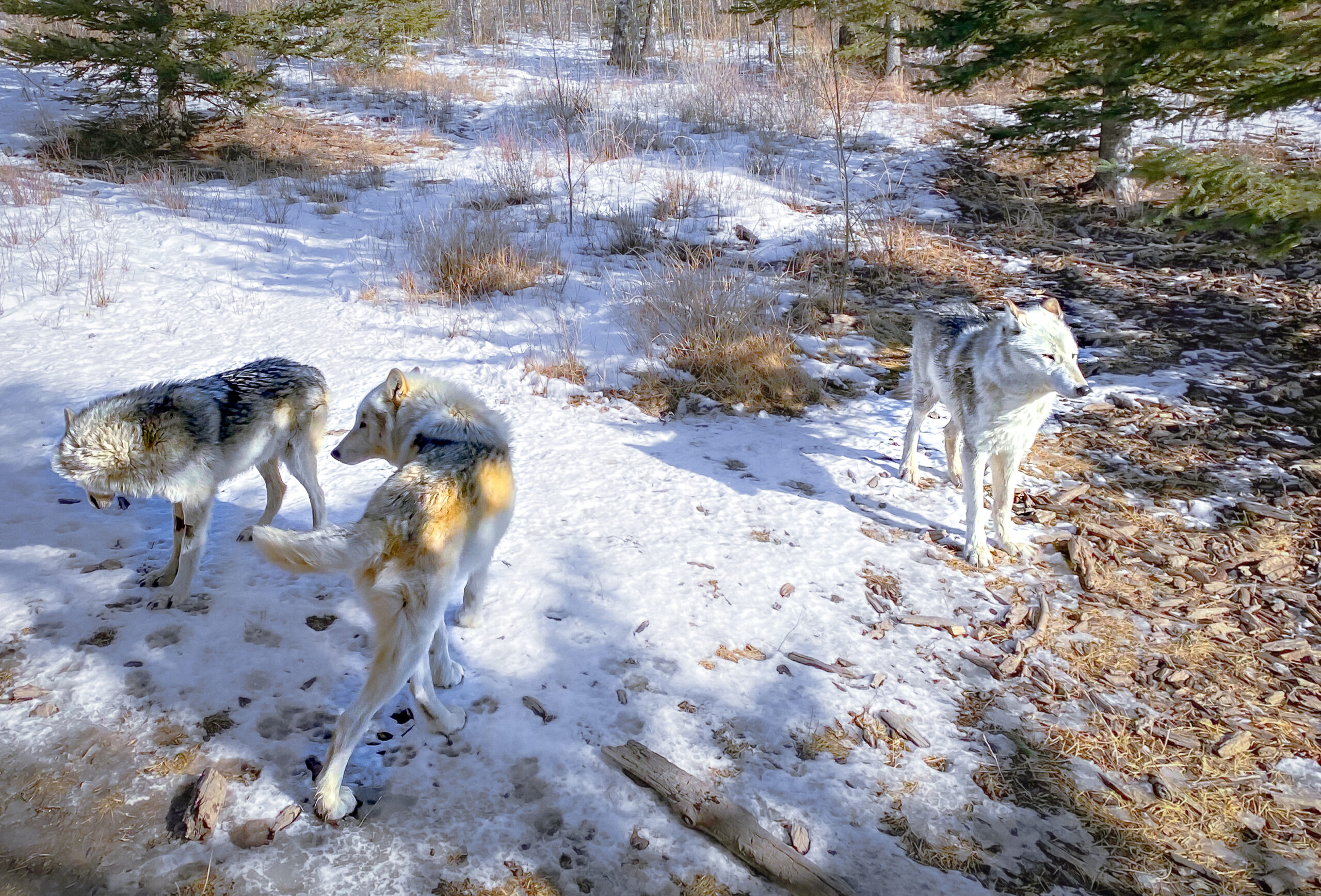A look into one of the only wolfdog sanctuaries in North America
Over March break, I visited Banff, Alberta. During my time there, I went to an interesting place called the Yamnuska Wolfdog Sanctuary.
Over the past summer, I had been seeing a lot of friends of mine travel to Banff and it was always at the back of my mind. So, I proposed we go there and Anthony, my boyfriend, was completely on board with the idea.
During my research for activities to do in Banff, I came across the Yamnuska Wolfdog Sanctuary visit, a center where you can learn exactly what wolfdogs are and what the sanctuary does. This trip was the first one I’ve ever planned on my own and I wanted to use it as a learning experience.
I was immediately enticed and bought two tickets for our first full day in Banff.
We left for our trip on Feb. 26, and waking up to our first day in Banff the day after was amazing; I was so excited to be there. It was a beautiful sunny day in the Canadian Rockies.
Upon arrival we were greeted by a scenic sanctuary entrance, accented by these huge gates that have outlines of wolfdogs on them. Wolfdogs, in a nutshell, are the result of mixing canine and wolf breeds together.
Alyx Harris, the operations manager at Yamnuska Wolfdog Sanctuary, explained the sanctuary was started by founder Georgina De Caigny back in 2011. Harris said, “Essentially she got inspiration when she got a wolfdog of her own and she saw how challenging they are.”
According to the Yamnuska website, when De Caigny noticed a rise in wolfdog breeding, she felt the need to make a safe place for the wolfdogs to have a forever home.
In the intro tour, we were introduced to one of the packs. It featured a sibling trio: Grizz, Aspen, and Quinn.
The tour guide began to explain that the packs in the sanctuary are usually composed of two wolfdogs, or three at the most.
“The wolfdogs tend to have a lot of same-sex aggression and territorial behaviors. It is easiest for us to pair a male and a female together. Once we have that male and female pair it is very unlikely that we will have a new member join that pack,” Harris said.
An interesting fact that the tour guide told us was the three different types of wolfdogs that you can find living at the sanctuary.
“When we discuss wolfdogs, we always say it depends on the wolf content. […] So essentially, a low content, a mid content, and a high content wolfdog,” Harris explained.
What these categories mean in a nutshell is how much wolf there is in a wolfdog. A high content wolfdog has more wolf characteristics than a dog, while a low content wolfdog has a higher percentage of canine characteristics than their higher wolf content counterparts.
After our very informative intro tour, we were free to walk around the sanctuary and visit the different wolfdog enclosures. It got me thinking: where exactly do all of these wolfdogs come from?
“We do have wolfdogs from essentially all around North America. The wolfdogs come from different situations. Most of the time, the owners surrender them, they come from transfers from other organizations, and sometimes cruelty situations like backyard breeding,” said Harris.
According to the International Wolf Center, people that own hybrids [wolfdogs] often have a difficult time caring for them. Due to their genetic composition, it leads to their behavior to be more inconsitent.
Visiting this sanctuary was one of the highlights of my trip and it was very surreal for me while I was there. There was a moment when all the wolves in the sanctuary started to howl and you could hear the howling sweeping through the sanctuary.
With the wolfdogs coming from all kinds of backgrounds, the sanctuary has future goals of becoming a resource for the conservation of wolves in the wild. I recommend visiting the Yamnuska Wolfdog Sanctuary if you are in the Cochrane, Alberta area.
Photo by Dalia Nardolillo
